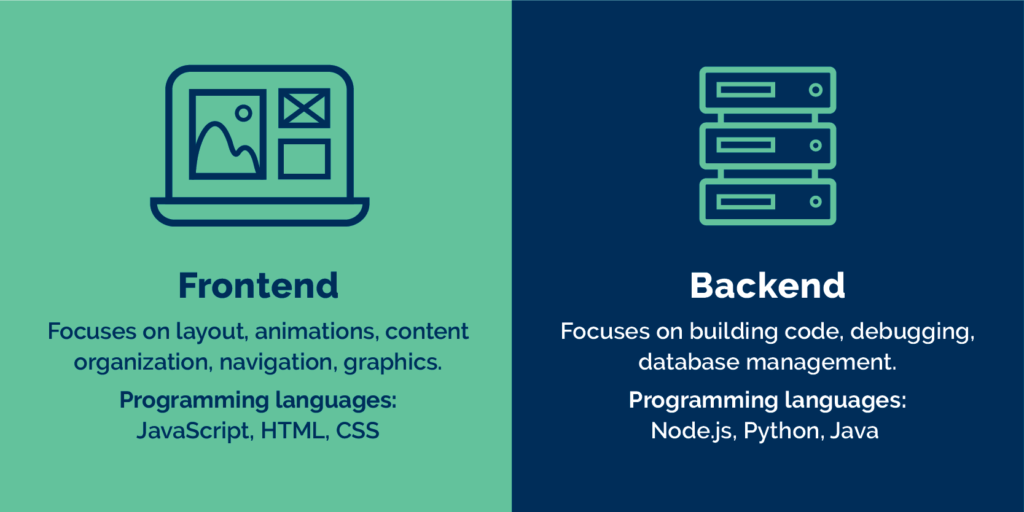AZG News Hub
Your go-to source for the latest news and informative articles.
Behind the Curtain of Back-End Magic
Uncover the secrets of back-end development! Dive into the magic that powers your favorite websites and apps. Click to explore!
Unveiling the Secrets: How Back-End Development Powers Your Favorite Apps
Back-end development is the backbone of your favorite applications, silently performing a multitude of tasks that you don't see but can't live without. From database management to server configurations, the back-end ensures that everything runs smoothly. When you interact with an app, you're actually communicating with a complex network of server-side scripts, APIs, and databases that store and retrieve your data seamlessly. Behind the curtain, programming languages such as Python, Ruby, and Java are used to create the functionalities that users rely on, allowing for dynamic content delivery that keeps apps both engaging and efficient.
One of the most compelling aspects of back-end development is its ability to scale applications. As user demand grows, back-end developers optimize performance through various techniques, including load balancing and database optimization. This means that your favorite apps can handle increased traffic without compromising speed or functionality. In addition, the security measures implemented in the back-end are crucial; they protect sensitive user data and ensure safe transactions, fostering trust and reliability in the applications you use daily.

The Hidden Framework: Understanding APIs and Their Role in Back-End Functionality
In today's digital landscape, APIs (Application Programming Interfaces) serve as the hidden framework that supports the functionality of various applications. Essentially, APIs enable different software applications to communicate with one another, facilitating a seamless exchange of data. This back-end communication is critical for ensuring that users receive accurate and timely information, making APIs an integral part of app development and management. Without this robust infrastructure, many of the features we take for granted today would not be possible, highlighting the importance of understanding how APIs operate and their underlying architecture.
Moreover, APIs come in various types, each serving a specific purpose in back-end functionality. For instance, REST APIs are widely used for their simplicity and scalability, while SOAP APIs are renowned for their robustness and security features. Additionally, GraphQL APIs have gained popularity for their flexibility in querying specific data sets. Recognizing the differences among these API types is crucial for developers looking to optimize their applications, as the choice of an API can significantly impact performance, user experience, and overall functionality.
What Happens Behind the Scenes? A Deep Dive into Database Management and Server Communication
In the world of database management, the complexity often goes unnoticed by the end-users. At its core, database management involves the organization, storage, and retrieval of data in a way that is efficient and effective. Server communication plays a crucial role in this process, as it establishes the connection between the user interface and the back-end systems that hold the data. Typically, this involves queries sent from clients to a server, where a database management system (DBMS) interprets these requests, executes them, and returns the relevant data. Understanding how this interaction occurs can provide insight into the overall performance of applications and systems.
Moreover, database management doesn't just stop at data retrieval. It encompasses various critical tasks such as data replication, backup, and security measures, ensuring the integrity and availability of information. On the other side, server communication is vital for ensuring low latency and high reliability, allowing users to interact with applications seamlessly. Behind the scenes, databases can be finely tuned with indexing, caching, and partitioning strategies that optimize performance and resource allocation. All these components work hand in hand to create a robust infrastructure capable of handling the demanding requirements of modern applications.